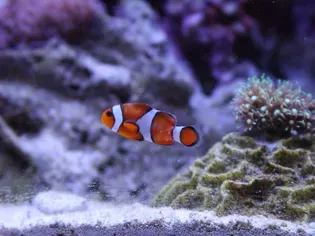Brooklynella in Fish
Updated on 04/26/24

Brooklynella in Fish: A Comprehensive Guide to Identification, Treatment, and Prevention
Introduction
Brooklynella is a highly contagious parasitic infection that affects fish, causing significant health problems and mortality. This elusive parasite can be challenging to diagnose and treat, but with the right knowledge and proactive measures, you can protect your fish and ensure their well-being.
Etiology
Brooklynella is a free-swimming protozoan parasite belonging to the family Platyhelminthes. It is primarily found on the gills, skin, and fins of freshwater and marine fish. The parasite attaches itself to the fish's tissue using a specialized attachment organ called a haptor.
Signs and Symptoms
The clinical signs of Brooklynella infection vary depending on the severity of the infestation. Common symptoms include:
* Gill swelling and hyperplasia
* Clouding and excessive mucus production on the gills
* Respiratory distress
* Rapid breathing
* Loss of appetite
* Lethargy
* Skin and fin erosion
* Flashing against objects
* Increased mortality
Transmission
Brooklynella is transmitted through direct contact with infected fish or contaminated water. It can be introduced into an aquarium through new fish, live food, or contaminated equipment. The parasite can survive for extended periods in the environment, making it challenging to eliminate.
Diagnosis
Diagnosis of Brooklynella can be challenging, as it requires microscopic examination of the gills or skin. A definitive diagnosis is made by identifying the characteristic parasites under a microscope.
Importance of Early Detection
Early detection of Brooklynella is critical for effective treatment and prevention of further spread. If you suspect your fish are infected, it is essential to consult a veterinarian or experienced aquarist immediately.
Treatment Options
Treatment for Brooklynella typically involves the use of antiprotozoal medications. The specific treatment protocol will depend on the severity of the infection and the species of fish affected. Common medications used include:
* Formalin
* Malachite green
* Quinine
* Metronidazole
Prevention
Prevention is the best defense against Brooklynella infection. Implementing the following measures can help reduce the risk of introducing and spreading the parasite:
* Quarantine new fish before adding them to your main tank.
* Inspect live food carefully for any signs of disease.
* Disinfect equipment and tools that have been in contact with infected fish.
* Maintain optimal water quality by performing regular water changes and using a filtration system.
* Avoid overcrowding your aquarium.
* Provide a balanced diet to your fish to ensure a healthy immune system.
* Establish a quarantine protocol for any new fish or equipment that is introduced into your aquarium.
Examples of Brooklynella in Fish
Case Study 1: Goldfish Aquarium
In a 50-gallon goldfish aquarium, several fish began exhibiting signs of respiratory distress, including rapid breathing and gasping for air. Upon closer examination, the gills of the fish were swollen and covered in excessive mucus. Microscopic examination confirmed the presence of Brooklynella parasites, indicating an active infection. Treatment with formalin solution was initiated immediately, resulting in a successful recovery of the fish within 14 days.
Case Study 2: Community Aquarium
In a mixed-species community aquarium, a few neon tetras began showing signs of lethargy and loss of appetite. Further observation revealed skin and fin erosion, suggesting a parasitic infection. Microscopic examination of the skin scrapings identified Brooklynella parasites, leading to a diagnosis of Brooklynella infection. A treatment plan involving malachite green baths was implemented, and the infected fish recovered within 10 days.
Conclusion
Brooklynella is a serious parasitic infection that can significantly impact the health of your fish. Early detection, prompt treatment, and preventive measures are essential for protecting your fish and maintaining a healthy aquarium environment. By following the guidelines outlined in this article, you can effectively combat Brooklynella and ensure the well-being of your aquatic pets.
Explore More Pets

Freshwater Aquarium Filters
How to Deal With Cloudy Aquarium Water

Saltwater Aquarium Filters
How Do You Remove Chloramines From Tap Water?

Freshwater Aquariums & Habitat
Can I Keep My Koi Fish Inside?

Saltwater Aquariums & Habitat
14 Best Floating Plants for Your Aquarium

Freshwater Fish Health
How to Treat Ich on Freshwater Fish

Saltwater Fish Health
Fin Rot in Aquarium Fish

Freshwater Aquarium Filters
How to Do Aquarium Water Changes

Saltwater Fish Health
How Do Fish Get Parasites?